#galerie ziegler
Photo

Kimber Smith, Silberhell, (lithograph), 1963 [Galerie Ziegler, Zürich. © The Estate of Kimber Smith]
134 notes
·
View notes
Text
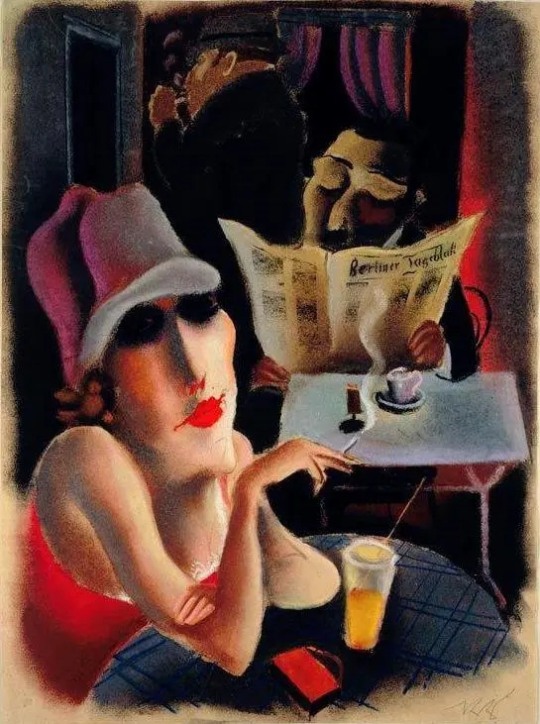
Richard Ziegler (German, 1891-1992) Berliner Tageblatt, 1927-28. Berlinische Galerie, Germany.
0 notes
Photo

Mel Ziegler at Galerie Perrotin
Fifteen years of collected memorabilia from Mt Rushmore yielded the material for artist Mel Ziegler’s one thousand digitally printed portraits of the monument’s four presidents, currently filling the ground floor of Galerie Perrotin on the Lower East Side. Though repetition and systemization are key, the degradation of each image – suggesting they were lifted from cheaply made or tiny reproductions – leaves the most lasting impression. Despite the scale of the effort in the original Rushmore or Ziegler’s redo, there’s no guarantee that a burnished image will be handed down to posterity. (On view through Aug 16th). Mel Ziegler, detail installation view of ‘1000 Portraits,’ inkjet on canvas, dimensions variable, each canvas 8 x 10 inches, 2018.
#mel ziegler#1000 portraits#mt rushmore#presidents#souvenirs#memorabilia#galerie#gallery#perrotin#lower east side#tour#art#installation
2 notes
·
View notes
Photo

garadinervi: Max Bill, Multibills, Galerie Ziegler SA, Genève,... http://bit.ly/2EHLKZx
16 notes
·
View notes
Photo


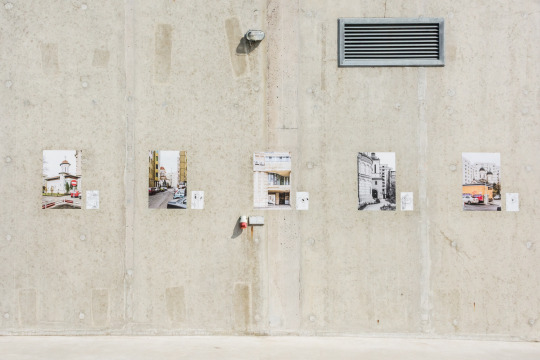
Mobile Churches, 2013–2017, 7 photographs and 7 historical sketches on wallpaper
A selection of works from the photo book Mobile Churches is on view during the group exhibition PORÖS at sculplobe in Berlin, from Aug 15–Sep 19. The show opens on August 15th 12–10 pm.
One of my concerns is the mnemonic function of places, how memories are tied to places. Mobile Churches analyses the dictatorial fantasies that manifest themselves in the urban reality of Bucharest to this day. As part of the so-called ‘systematisation’ program under Romanian dictator Ceaușescu, seven Orthodox churches were lifted, moved on rails and placed in backyards, thus erasing them from the official cityscape. However, it was not the devaluation in the consciousness of the society that was achieved, but rather an expansion from the old to the new place, which lays itself like a trace in the memory, making the churches all the more significant. If one is deprived of a concrete sight, the mental horizon widens. The efforts of an atheist regime to push the sacral buildings out of the cityscape, to demarcate them, has ultimately led to the opposite, to permeability.
In 2018, presented by Kehrer Galerie and curated by Sonia Voss, the photo series Mobile Churches was nominated for the New Discovery Award and was on view at Les Rencontres de la photographie in Arles. The book dummy of Mobile Churches was nominated for the Dummy Book Award at the Unseen Photography Festival in Amsterdam and at Les Rencontres d'Arles, both in 2017. The resulting photobook published by Kehrer Verlag, Heidelberg, was shortlisted for the Photobook Award at FOLA Fototeca Latinoamericana in Buenos Aires and also at PhotoBookAthens during the European Month of Photography at Benaki Museum in Athens.
PORÖS, August 15th–September 19th
Fadi Aljabour, David Edward Allen, Hannes Brunner, Anton Burdakov, Sunah Choi, Christoph Draeger, Kasia Fudakowski, Ingo Gerken, Sujatro Ghosh, Lise Harlev, Marie von Heyl, Daniel Hölzl, Christin Kaiser, Shila Khatami, Anton Roland Laub, Antonia Low, Katharina Ludwig, Paul McDevitt, Ulrike Mohr, Christl Mudrak, Victorine Müller, Florian Neufeldt, Olaf Nicolai, Victoria Pidust, Lucy Powell, David Rickard, Fette Sans, Max Schulze, Aiko Shimotsuma, Tommy Støckel, Halveig Villand, Ella Ziegler, Michaela Zimmer
„The new frontier is your epidermis“ writes Paul B. Preciado in his Art Forum essay Learning From The Virus and thereby points to the fact that the borders and outlines of countries, buildings and yes, bodies, are not set in stone but continuously drawn and redrawn. The permeability of the skin, Preciado seems to suggest, is not merely a biological fact, but also serves as an architectural and geographical metaphor. Conceiving of bodies, objects, territories and buildings as porous entities, however, poses the question whether the subject/object divide that we have grown so accustomed to is conceptually still feasible. Are there other ways to make sense of the world, conceptually and/or aesthetically as well as socially?
The exhibition PORÖS at Lobe Block picks up on these threads to bring together artworks, performances and interventions under the umbrella term porosity. The outdoor areas of the building become the site for installations and events that metaphorically, aesthetically or conceptually engage with the concepts of porosity and permeability.
PORÖS will be the first public event of sculplobe e.V., a non-profit association founded in 2021 by a group of artists, architects and curators in order to facilitate art projects in and around the building Lobe Block in Berlin. Sculplobe e.V. aims to create a forum for conversations between contemporary global art and the neighbourhood Wedding. Participating artists are encouraged to engage artistically and socially with the local environment.
www.sculplobe.com
Opening: August 15th 12–10 pm
Opening times: Sat/Sun 12–6 pm or by appointment [email protected]
Location: Lobe Block, Böttgerstraße 16, 13357 Berlin
Events:
August 15th 12–7 pm
: I Have Eaten So Many Diamonds They Are Now Poking Through My Skin (says Anne) - Marie von Heyl & Fette Sans will perform the porosity of bodies and language in a seven hour long conversation in a setting by Kasia Fudakowski.
August 15th 6–9 pm:
Food, Politics and Caste - A performative meal by Sujatro Ghosh (Baldon Restaurant) please contact [email protected] to make a reservation
August 15th 5 pm
: Room For A View (Daniel Hölzl with Hannes Brunner) - A performative architectural exercise in porosity as a reminder to the ambivalence of monolithic gestures
September 10th 11–3 pm
: Room For - A View (Daniel Hölzl with Hannes Brunner) - A performative architectural exercise in porosity
September 19th 6:30 pm:
Un-w/hol(e)-y - A reading performance by Katharina Ludwig weaving through the site of Lobe Block in search for an un-w/hol(e)-y, unreliable language of an environment/co-habitation that grows into a narrative choreography. Perhaps there will be props and objects involved.
September 19th 8 pm
: Dalunsch - A performance by Victorine Müller
1 note
·
View note
Photo
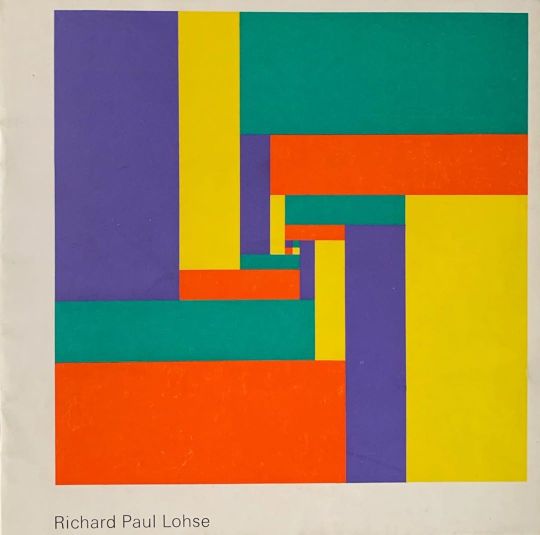
Lohse, Richard Paul. 1967 8°. OKart. unp., Ausstellungskatalog Galerie Renée Ziegler, Zürich #richardpaullohse #konkretekunst #kunstkiosk #kunstkioskimhelmhaus https://bit.ly/2LC1gHH https://www.instagram.com/p/CANqlzrlYyu/?igshid=1nnapzgjk0swz
0 notes
Photo
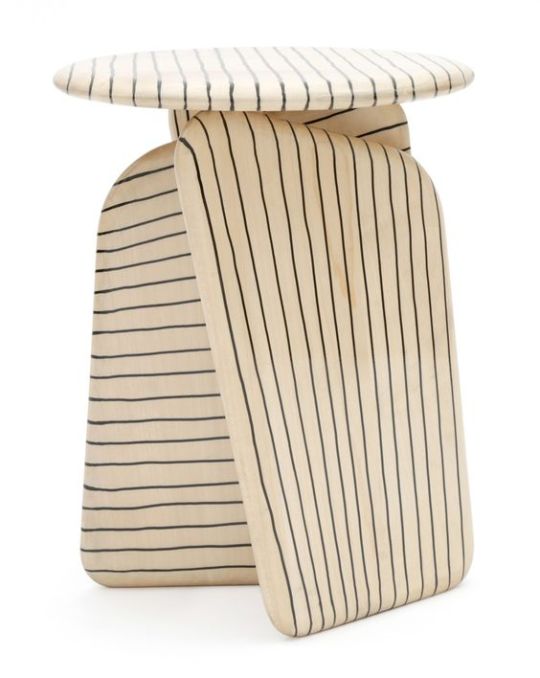
Pierre Brichet et Caroline Ziegler présentaient pendant les D’Days à la galerie Joseph, la toute jeune marque By Hands qu’ils lancent en auto-édition. intramuros.fr
15 notes
·
View notes
Photo
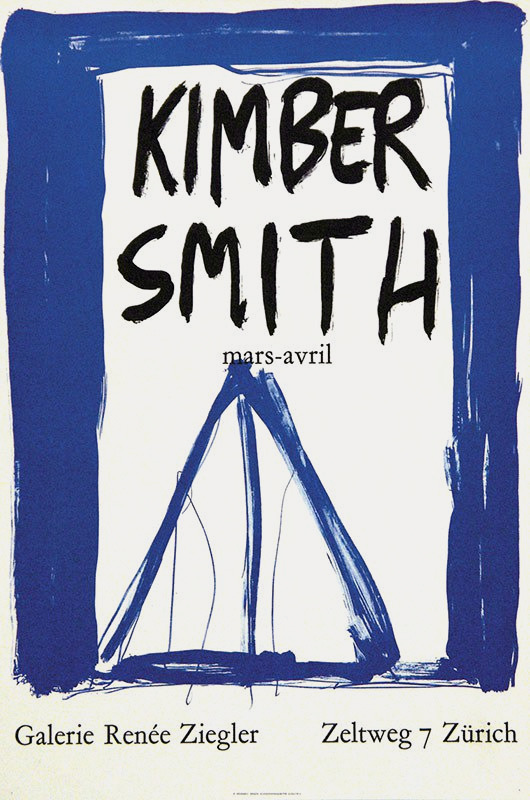
Kimber Smith, Galerie Renée Ziegler, Zürich, 1970s-1980s
#graphic design#art#geometry#exhibition#poster#kimber smith#galerie renée ziegler#galerie ziegler#1970s#1980s
13 notes
·
View notes
Text
TEFAF NY Spring 2019
Today, I’m reporting Breakfast Club's field trip to the Upper East Side!
We were noticing that there had been a “new” art fair arrived from Europe but didn’t know what that was.
This year, our friend Seth told us that he’d be talking at the fair about things (topics most likely include the school where we attended), so we did lil’ research about the fair that came from the Netherlands and decided to join it to find out more.
Modern and Contemporary Art & Design Art Fair
TEFAF NY Spring 2019
May 3rd-May 7th, 2019 with VIP Opening on Thursday, May 2nd
Park Avenue Armory at East 67th Street


We attended this Cultural Program (see below):
TEFAF AFTERNOONS - Art and Political Action: Art’s Strongest Calls
Sunday May 5th, 2019 - 2pm - 3pm
Panel:
Seth Cameron
Christian Viveros-Faune

Seth discussing his idea for activism in the arts


Seth discussing one of the Bruce High Quality Foundation’s projects, BHQFU (Bruce High Quality Foundation University- where I used to teach a class)
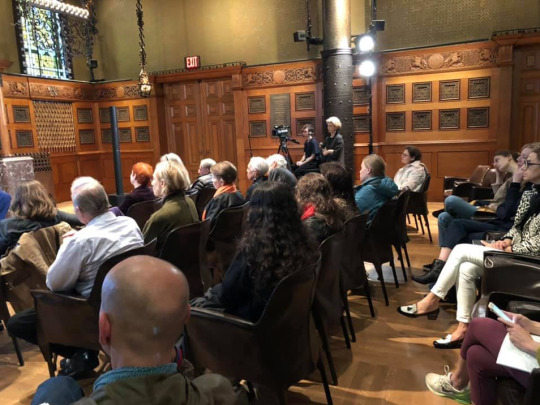
A well-attended session...

in an extremely decorative room that we’ve never seen before.
You can watch the official fair highlights HERE.
Our Highlights below:
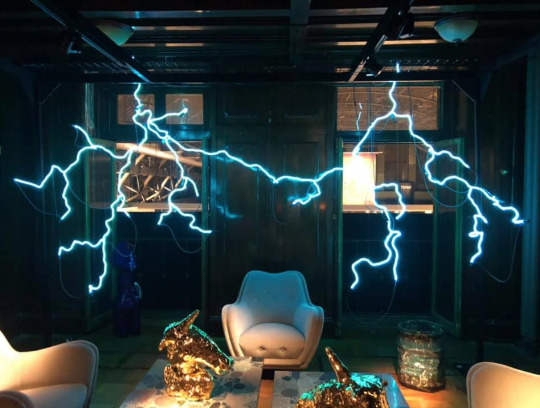
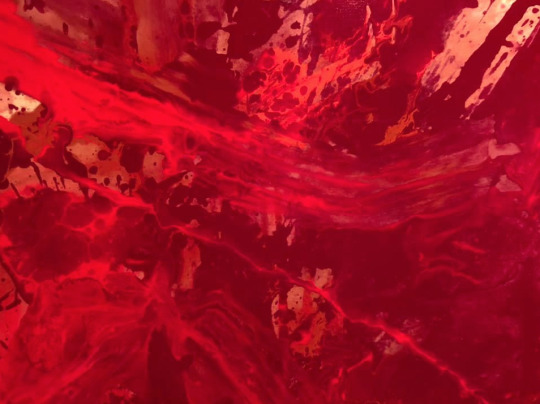

INFINITY-NETS [PHNBQ] by Yayoi Kusama
Victoria Miro, Stand 330
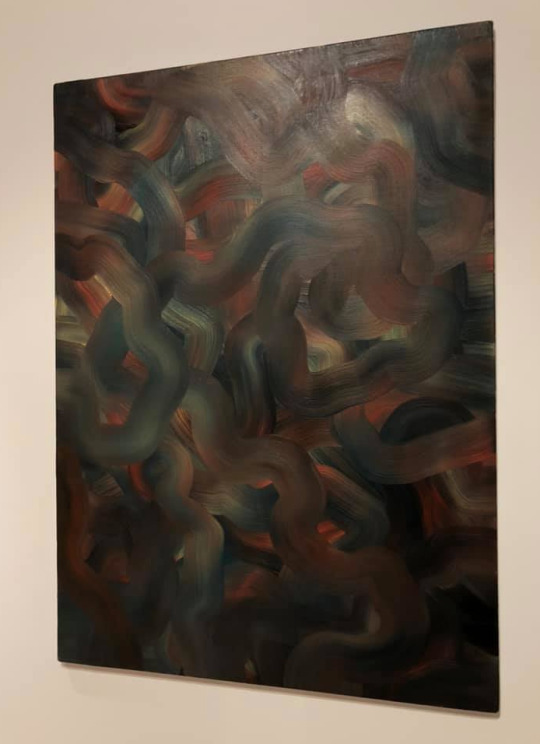
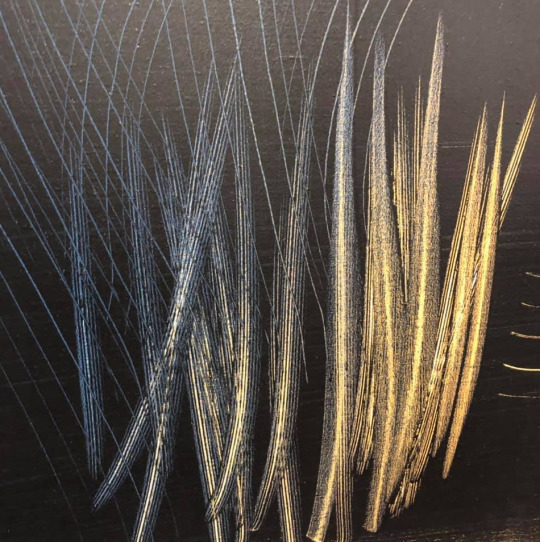
Nice detail...

of this painting
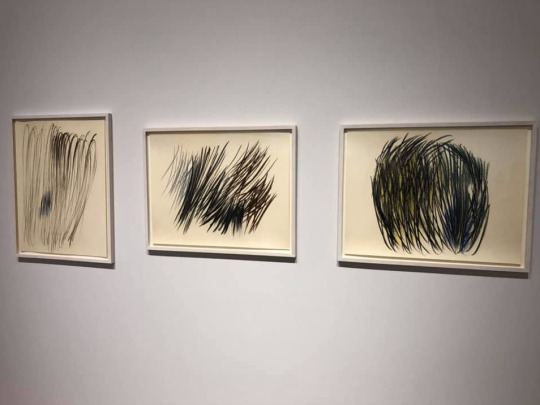
P1959-7, P1958-120, and P1958-131 by Hans Hartung
Perrotin

Ecriture No. 60-78 by Park Seo Bo
Gana Art
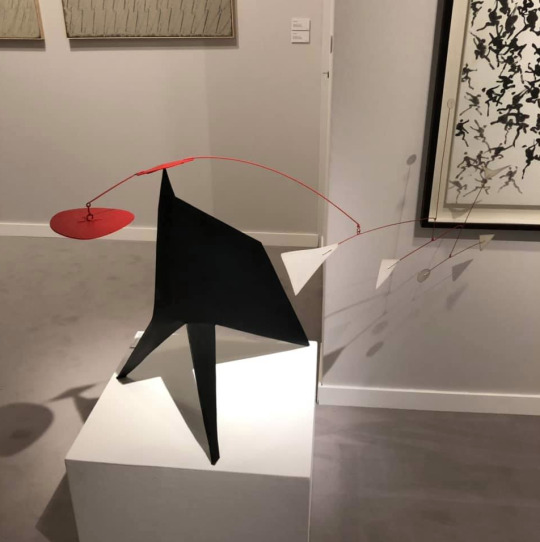


Texture
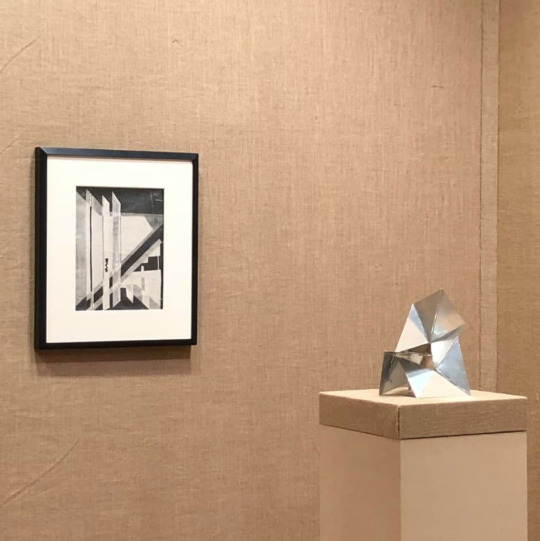
Texture on the wall
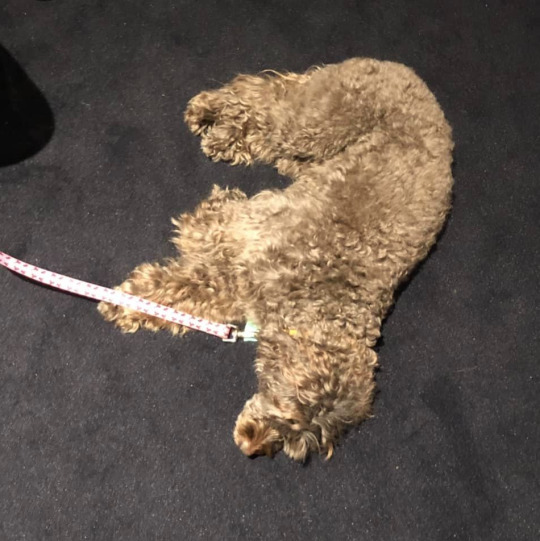
Suddenly a doggie with very textured hair appeared in front of me at a relaxing European art fair.

Natura morta by Giorgio Morandi
Dickinson (in “Beauty, Shared: A Collector’s Vision” section)

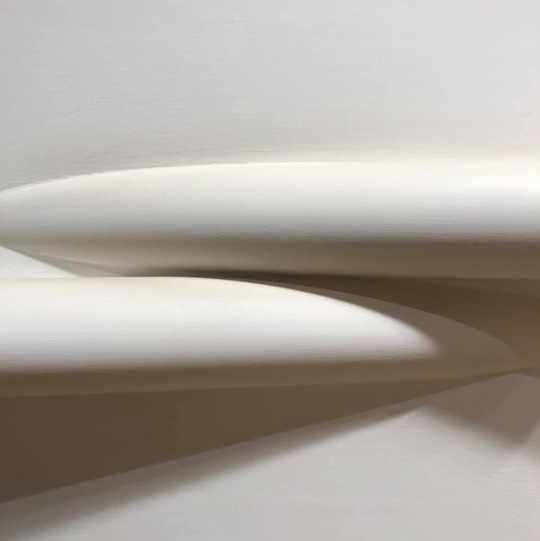

Untitled (painted wood) by Sergio Camargo
Gladstone Gallery


Untitled by Fred Sandback
Patrick Derom Gallery
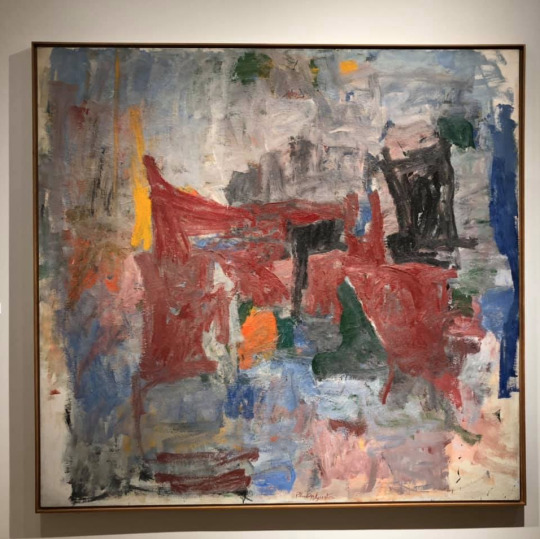


Untitled by Ilse D’Hollander
Victoria Miro
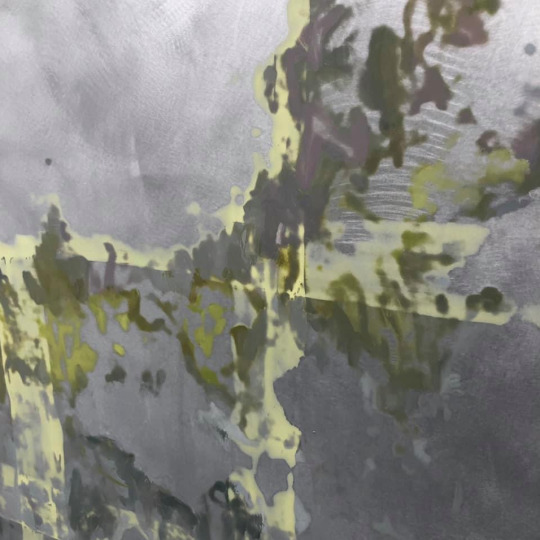
Detail

Imaginary Basement by Toby Ziegler
Galerie Max Hetzler
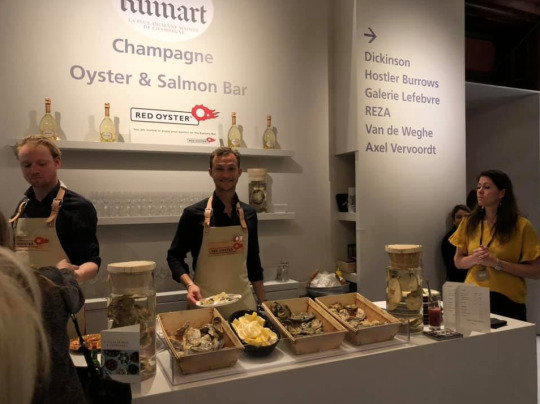
Oysters! You can take a rest from the busy fair in the lounge area.

We noticed that this fair looks very traditional and contemporary at the same time maybe because of the lighting designs in the building:

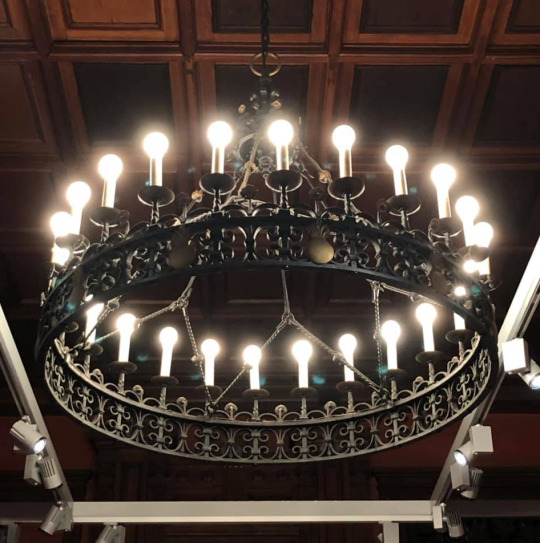

It is the armory, so there’re details of the building that you can’t do anything about it.

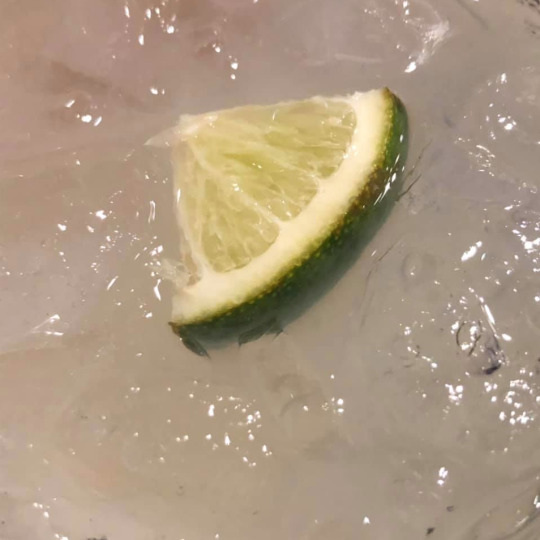
It’s a good place to think about the future of Europe.

Looking at the entire fair from the 2nd floor cafe with a latte
This fair hosts European galleries that sell ancient art and contemporary art in the same booth, which is considered unusual in the United States.
I talked to a few gallerists and they said that because more and more young artists were inspired by ancient art objects, it was logical for those dealers to exhibit new and old pieces, side by side. That’s a good point. Their buyers were museums and private collectors.

Dinamica luminosa by Alberto Biasi
Tornabuoni Arte
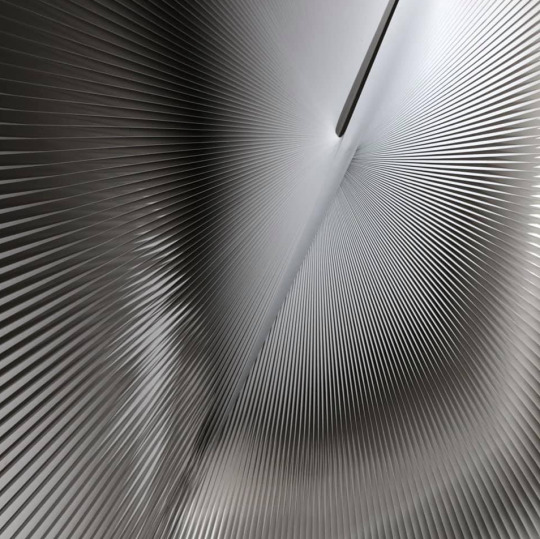
Thank you TEFAF NY Spring 2019 for having us!
reported by Nozomi Kato 2019
0 notes
Text
YOKO ONO: VOICE OF A WOMAN
June 10 - Sept 3
Galerie Ziegler, Rämistrasse 34, CH-8001 Zürich, Switzerlandhttps://t.co/7SAYw53hki http://pic.twitter.com/HjTtY2BflG
— Yoko Ono (@yokoono) June 9, 2017
0 notes
Text
Frank Stella became a celebrity in the early Seventies in Europe , where exhibitions were being organized all over Europe. Among them, his exhibitions in Zurich and Amsterdam where on both occasion were his V series exhibited. The difference?…. in Zurich these works were for sale and in Amsterdam they only were on show, but what makes thgis exhibition fro me more special is that with the exhibition a wonderful Wim Crouwel designed catalogue was published .
The catalogue was published with a relief cover and this made it a true artist book as for an invitation…. they decide to use the shape of the 1960 Newstead Abbey painting to make the event even more special. In contrast the Zurich exhibition at the galerie Renee Ziegler had only an invitation with a special silkscreened V series pattern on the card ( but this is also very beautiful;-) 1970 was an important year for Frank Stella and www.ftn-books.com is lucky to have all three discussed items now in its inventory.
Frank Stella and his 1970 exhibitions Frank Stella became a celebrity in the early Seventies in Europe , where exhibitions were being organized all over Europe.
0 notes
Photo
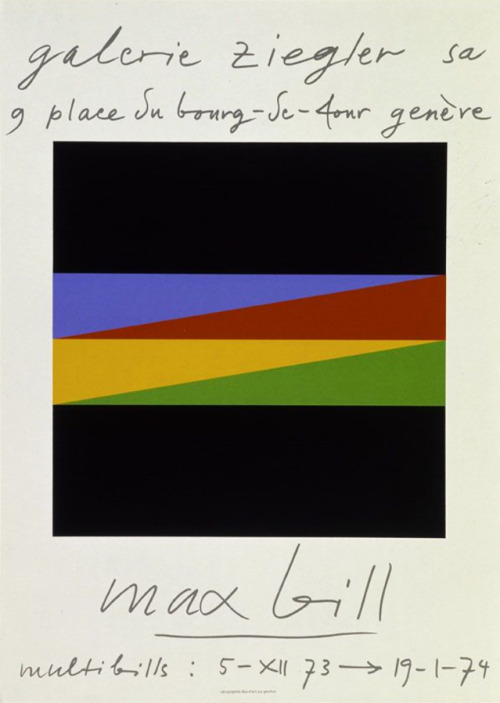
Max Bill, Multibills, Galerie Ziegler SA, Genève, December 5,... http://bit.ly/2UXjO93
10 notes
·
View notes
Photo

Just Pinned to FURNITURE: Pierre Brichet et Caroline Ziegler présentaient pendant les D’Days à la galerie Joseph, la toute jeune marque By Hands qu’ils lancent en auto-édition. http://ift.tt/2hS6Wli
0 notes
Text
Alchemy. The Great Art
In medieval Europe, alchemy was the Ars magna, the ‘Great Art’.
Sarah Schönfeld, All you can feel, Crystal Meth (Planets), photo-pharmaceutical series 2013. Crystal Meth on photo-negative, enlarged as c-print
Alchemie. Die Große Kunst/Alchemy. The Great Art (exhibition view.) © Photo: David von Becker for Staatliche Museen zu Berlin
Alchemy. The Great Art, a show which will close this Sunday at Berlin’s Kulturforum (i’m writing this post in a hurry in the hope that some of you might still catch it) explores the enduring relationship between alchemy and art. The alliance between the two fields is an intimate one: both art and alchemy are about creation, both rely on experimentation, knowledge-seeking and passion.
Mixing historical artefacts and contemporary artworks, the exhibition also rehabilitates alchemical practices and illuminates their legacy. We often dismiss alchemy as a charlatan pseudo-science which sole purpose was chrysopoeia (the making of gold.) Most of its adepts had a very modern pursuit though: they wanted to imitate the divine act of creation itself and even to surpass it. This drive to transmute existing matter into a man-made compounds still influences many artists (and scientists) today, especially the ones whose work investigates processual transformation of material.
The parallels between the old-time practice and contemporary life do not end there. The need to mine the alchemical “first matter” (prima materia) from below ground echoes our ‘extractivist’ society. As for the creatures of doctors Faustus and Frankenstein and the disquieting new forms of life elaborated in research laboratories, they are the scions of the homunculus, this tiny human being grown in a glass jar and depicted in medieval manuscripts.
While searching for the philosopher’s stone, the elixir of immortality or the panacea, some experimenters made – sometimes by chance – discoveries that paved the way for modern chemistry and pharmacology. The by-products of alchemists’ exercises, such as porcelain, gold-ruby glass and phosphorus, are still very much valued today.
Alchemy. The Great Art manages to pack the historical, the spiritual, the hocus-pocus and the protoscience dimensions of alchemy into a rich and fascinating show. My pitiful article, however, doesn’t have the ambition to cover the multiple perspectives on alchemy presented at Kunstforum. It will mostly look at a few artworks i discovered while visiting the show:
Sarah Schönfeld, Hero’s Journey (Lamp), 2014. © Sarah Schönfeld
Sarah Schönfeld, Hero’s Journey (Lamp), 2014. © Sarah Schönfeld. Photo via tissue magazine
One of the focal points of the exhibition is Sarah Schönfeld‘s Hero’s Journey (Lamp). Over a period of ten weeks, the artist asked partygoers of Berghain, allegedly Berlin’s most exclusive nightclub, to donate their urine. She then treated the yellow liquid with an antimicrobial agent often used as a preservative in the cosmetic industry.
The biological excretions are now contained inside an illuminated glass case. The urine shines like gold and constitutes a kind of monument to the club’s mythical status as well as to the ecstatic emotions induced by recreational drugs.
Sarah Schönfeld, Adrenaline – Adrenaline on photonegative analogue, enlarged. From the All you can feel series
Sarah Schönfeld, MDMA on photonegative analogue, enlarged. From the All you can feel series
For the All You Can Feel photo series, Schönfeld developed a process that she calls “modern alchemy.” She sprinkled all sorts of mind-altering substances, from caffeine to neurotransmitters, onto photo negatives. The results of the chemical reactions between the negative’s emulsion and the drug was then submitted to photographic process.
When asked by VICE how she managed to create images that match so adequately the feeling that these various drugs impart, the artist answered:
Well, I didn’t think that when I first produced the work, but after I published the book (also called All You Can Feel) a lot of people said yes, this is how it feels. And what was really interesting is that I got a call from a drug rehabilitation center and they said that they had run their own little experiment. Without explaining the images, they had shown the book to their patients and asked them to pick a favorite. Every single one of them chose their drug of dependence, with 100 percent accuracy. Even the secretary who only ever drank coffee chose caffeine.
Heinz Hajek-Halke, Untitled, 1950-1970. © Heinz Hajek-Halke / Collection Michael Ruetz / Agentur Focus
It was particularly interested in the suggestion that photography, an artistic discipline born out of darkrooms and chemical laboratory experiments, used to be surrounded by an alchemical aura. Schönfeld’s work evoke photograms, the photographic image made without a camera by placing objects directly onto light-sensitive paper which is then exposed to light. There were some beautiful examples of photograms by Walter Ziegler in the show but i can’t find any image of them online, alas!
Heinz Hajek-Halke also experimented with photographic processes, exposures, instruments and materials. To create his “colour lucidograms” series, he drizzled soot-blackened glass negatives with liquids such as turpentine to produce craquelure-like patterns as the original congealed.
youtube
Peter Fischli & David Weiss, Der Lauf Der Dinge/The Way Things Go, 1987
Der Lauf der Dinge (The Way Things Go) is a famous video that follows a 30 minute long, uninterrupted chain of physical and chemical experiments full of carefully prepared explosions, accidents, fires, etc.
The Ripley Scroll, 18th century (Mellon MS 41, Beinecke Library). Alchemie. Die Große Kunst/Alchemy. The Great Art (exhibition view.) © Photo: David von Becker for Staatliche Museen zu Berlin
The ‘Ripley Scrowle’ (detail), 18th century. Image: Beinecke Library
The ‘Ripley Scrowle’ (detail), 18th century. Image: Beinecke Library
The copy of the Ripley Scroll i saw at Kulturforum is one of the most exquisite artifacts i’ve seen this year.
There are some twenty copies of these alchemical scrolls in existence. Each of them is a variation on a lost 15th century original. The manuscripts use pictorial cryptograms to detail the various processes involved in the preparation of the philosopher’s stone.
Although they are named after the English priest, author and alchemist George Ripley, there is no evidence that he designed them himself. The link with the alchemist is that the elaborate imagery of the emblems derives from his verses.
Traité de Chymie, France, circa 1700, S. 10/11. © The Getty Research Institute, Los Angeles
This watercolor shows that many early alchemists used instruments similar to the ones pharmacists or chemists would use later.
Natascha Sonnenschein, Paradies der Künstlichkeit, 2001. © Natascha Sonnenschein / VG Bild- Kunst, Bonn 2017
Facettierte Deckelflasche mit Montierung, circa 1700. © bpk / Kunstgewerbemuseum, Staatliche Museen zu Berlin
Sigismund Bacstrom, Device for Distilling Lunar Humidity, 1797
Johann Friedrich Böttger, Gold- and Silver nuggets, circa 1713. © Staatliche Kunstsammlungen Dresden, Porzellansammlung. Photo: Hans-Peter Klut, Elke Estel
One gold, one silver nuggets, allegedly transmuted by Johann Friedrich Boettger for King August of Poland in 1713. Boettger probably made them from ducats to win the King’s favour.
Louis-Jacques Goussier: Chymie, Laboratoire et Table des Rapports, in: Denis Diderot, Encyclopédie, 1771. © bpk / Staatliche Museen zu Berlin, Kunstbibliothek. Photo: Dietmar Katz
Yves Klein, Anthropometrie in IKB on Monogold, 1965 (exhibition poster), Galerie Alexandre Iolas, Paris. © Yves Klein / VG Bild-Kunst, Bonn 2017
More views of the exhibition space:
Alchemie. Die Große Kunst/Alchemy. The Great Art (exhibition view.) © Photo: David von Becker for Staatliche Museen zu Berlin
Alchemie. Die Große Kunst/Alchemy. The Great Art (exhibition view.) © Photo: David von Becker for Staatliche Museen zu Berlin
Alchemie. Die Große Kunst/Alchemy. The Great Art (exhibition view.) © Photo: David von Becker for Staatliche Museen zu Berlin
Alchemy. The Great Art, an exhibition curated by Jörg Völlnagel, remains open until Sunday 23 July at Kulturforum in Berlin.
Previously: The Occult, Witchcraft & Magic. An Illustrated History and Artefact: are technology and magical thinking really incompatible?, From swarms of synthetic life forms to neo-alchemy. An interview with Adam Brown.
from We Make Money Not Art http://ift.tt/2vIvxe5
via IFTTT
0 notes